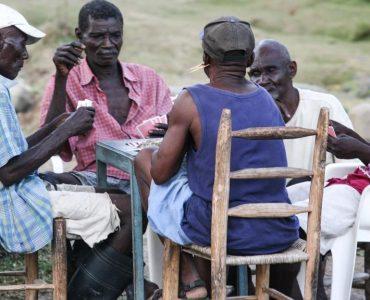The African diaspora consists of the worldwide collection of communities descended from native sub-Saharan Africans or people from Sub-Saharan Africa, predominantly in the Americas. The diaspora has continued for millennia, but historically, ethnographers, historians, politicians and writers have used the term particularly to refer to the descendants of the West and Central Africans who were enslaved and shipped to the Americas via the Atlantic slave trade between the 16th and 19th centuries, with their largest populations in Brazil, the United States and Haiti. Prior to the Atlantic slave trade, Arab traders took even more slaves from other parts of Africa, selling them to markets in North Africa and the Middle East (Western Asia).

The phrase African diaspora gradually entered common usage at the turn of the 21st century. The term diaspora originates from the Greek διασπορά (diaspora, literally “scattering”) which gained popularity in English in reference to the Jewish diaspora before being more broadly applied to other populations.
Less commonly, the term has been used in scholarship to refer to more recent emigration from sub-Saharan Africa. The African Union (AU) defines the African diaspora as consisting: “of people of native African origin living outside the continent, irrespective of their citizenship and nationality and who are willing to contribute to the development of the continent and the building of the African Union”. Its constitutive act declares that it shall “invite and encourage the full participation of the African diaspora as an important part of our continent, in the building of the African Union.
Much of the African diaspora became dispersed throughout the Americas, Europe, and Asia during the Atlantic and Arab slave trades. Beginning in the 8th century, Arabs took African slaves from the central and eastern portions of the African continent (where they were known as the Zanj) and sold them into markets in the Middle East, the Indian subcontinent, and the Far East. Beginning in the 15th century, Europeans captured or bought African slaves from West Africa and brought them to the Americas and to Europe. The Atlantic Slave Trade ended in the 19th century, and the Arab Slave Trade ended in the middle of the 20th century (although pockets of slavery still exist into the 21st century, such as the Haratin in Mauritania).

The dispersal through slave trading represents the largest forced migrations in human history. The economic effect on the African continent proved devastating, as generations of young people were taken from their communities and societies were disrupted. Some communities formed by descendants of African slaves in the Americas, Europe, and Asia have survived to the present day. In other cases, blacks intermarried with non-blacks, and their descendants blended into the local population.
Did you know that over ca. 90 million people in Brazil are of African origin?
Additional source: Wikipedia


